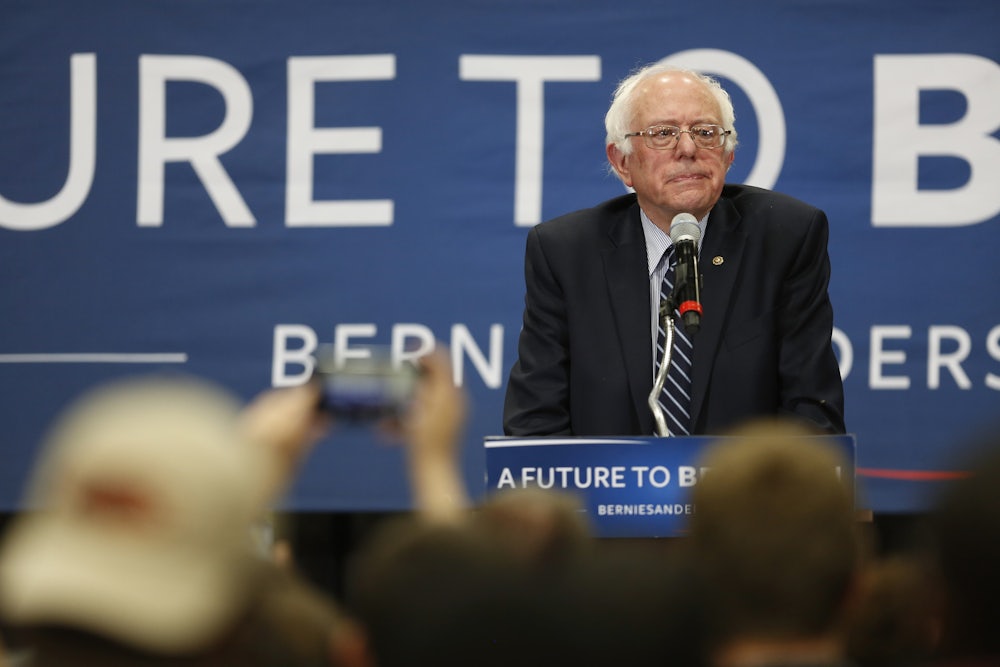Hillary Clinton’s victory in Saturday’s South Carolina primary is hard to overstate. The former secretary of state, who was slated to win the state under any conditions, appears to have picked up roughly 74 percent of the state’s Democratic voters, with reports emerging that Bernie Sanders did not win a single county. As expected, Clinton dominated among black voters, claiming 87 percent of their votes to Sanders’s 13 percent according to exit polling. Clinton did especially well among black women voters, winning 89 percent of their support compared to Sanders’s 11.
Though Clinton’s win was expected, it still doesn’t make for easy brushing off by the Sanders campaign: Black voters’ support is essential to securing the Democratic nomination, and the South Carolina results show little sign of major inroads being made by the Sanders campaign into black communities. So, though South Carolina doesn’t mathematically doom Sanders in terms of delegates, and though it’s too early to doomsay over Super Tuesday, it might be time to think about what Sanders’s political revolution will become in the event that his candidacy fails.
There are clues to the future of Sanders’s movement in the demographics he did relatively well with in South Carolina: the young and the independent. As with his past performances in Iowa and New Hampshire, Bernie did best among young people, earning 54 percent of voters between 17 and 29 years old. Notably, though Sanders did not win a majority of young black voters, he won more of their support than that of their older counterparts.
#SouthCarolinaPrimary c/o @SteveKornacki
— EJ Dionne (@EJDionne) February 28, 2016
Black voters under 30:#Clinton 56 #Sanders 43
Black voters over 65:#Clinton 96 #Sanders 3
Sanders also won 54 percent of voters who identified as independent, another group he has routinely appealed to throughout this year’s race to the Democratic nomination.
And though young people and independents might not be enough of a bloc to successfully nominate Sanders, they’re prime candidates for conversion to his brand of social democratic politics. In fact, young people and independents interested in Sanders’s political revolution might be the only hope for ongoing leftward momentum in American politics.
This is because the older voters of the Democratic party, whose votes have overwhelmingly gone to Clinton, don’t appear interested in Sanders-style social democracy, and probably won’t be anytime soon. And as long as they form a formidable numerical constituency and control resources inside the Democratic Party, business as usual will probably continue. This is partly a result of political crystallization: studies suggest that political attitudes are shaped relatively early on by social and political climates, and then tend to crystalize rather than shifting radically throughout voters’ lifetimes.
For Sanders, this means reaching out to young voters (or even youth too young to vote) with a message that can be organized around is critically important. It also means that keeping his base of youth voters intact even in absence of his own campaign is essential to ensure that there will be a contingent of Democratic voters friendly to social democracy in coming elections, when candidates encouraged by Sanders’s surprising success so far might feel confident enough to run on a similar message. For this reason, it makes sense for Sanders to keep traveling, speaking, and campaigning all the way to the Democratic convention, so that as many young voters as possible have the opportunity to encounter his political program. If Sanders folds too soon, the loss of young voters who might otherwise be amenable to his message might not be recoverable, and a strong leftward push inside the Democratic party might be suspended until another Sanders-like figure comes along. And with young voters arguably more vulnerable than others to the other political ideologies floating around at the moment, even centrist Democrats should be heartened by the idea of Sanders building a left movement for the future.
